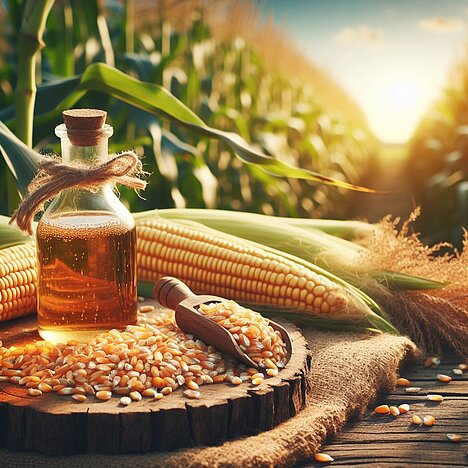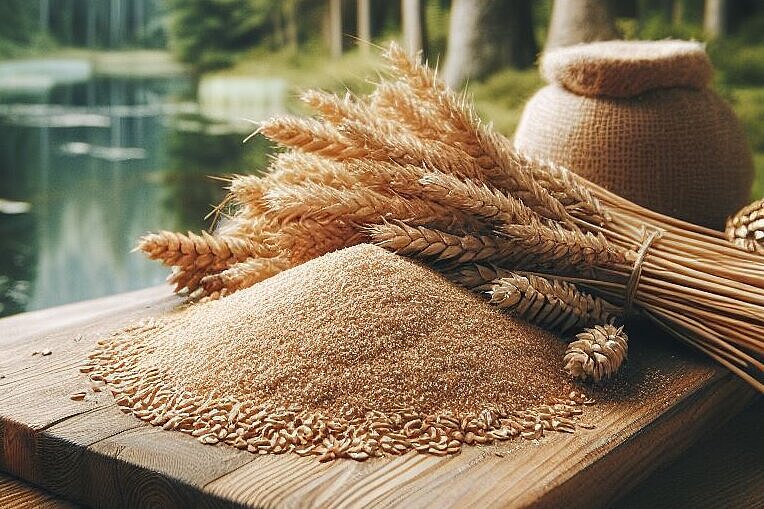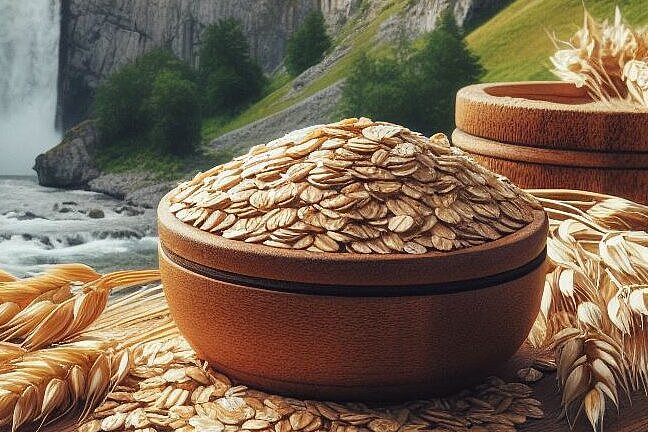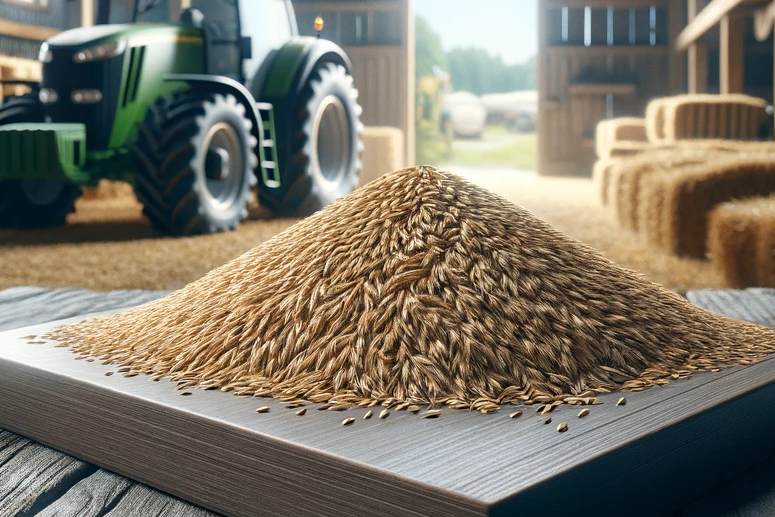Corn bran

Corn bran is a by-product of corn processing that is often used as a filler or source of fiber in dog food. But what exactly is corn bran and how does it affect your dog's health? In this article, you'll learn everything you need to know about corn bran for dogs.
What is corn bran?
Corn bran is the outer husk of the corn kernel, which is separated during the production of corn flour or corn syrup. It consists mainly of cellulose, an indigestible plant fiber that stimulates digestion and regulates bowel movements. Corn bran also contains some nutrients, such as vitamin B6, magnesium, iron and zinc, but in smaller amounts than whole corn kernels.
What are the benefits of corn bran for dogs?
Corn bran can have some benefits for dogs when fed in moderate amounts. For example, it can:
- Promote gut health by supporting intestinal flora and preventing constipation
- Increase satiety by increasing feed volume and slowing gastric emptying
- Stabilize blood sugar levels by reducing the absorption of glucose from the feed
- Reduce cholesterol levels by promoting the excretion of bile acids
- Strengthen the immune system by having anti-inflammatory and antioxidant properties
What are the disadvantages of corn bran for dogs?
Corn bran is not suitable for all dogs and can also have some disadvantages if fed in too large quantities or too frequently. For example, it can:
- Trigger allergies or intolerances, especially in dogs that are sensitive to grains
- impair nutrient absorption by reducing the availability of minerals such as calcium or zinc
- Cause bloating or diarrhea, especially in dogs that are not used to fiber or have a sensitive digestive system
- Fail to meet energy requirements, especially in active or growing dogs that need more protein and fat
- Degrade the quality of the food if used as a cheap substitute for high quality ingredients
How much corn bran can my dog eat?
The optimal amount of corn bran for your dog depends on various factors, such as his age, weight, activity level and health status. In general, however, corn bran should only make up a small part of the daily food ration and should not exceed 5% of the dry food. If you feed your dog a diet containing corn bran, make sure that it also contains sufficient protein and fat from animal sources and that it does not contain other grains or allergenic ingredients. If you feed your dog corn bran as a supplement, for example as a treat or for weight control, give him no more than one teaspoon per day and mix it well with his normal food.
Corn bran is a natural source of fiber for dogs that can have some health benefits. However, it should only be fed in small quantities and should not replace the main food or affect the nutrient supply.
If you notice any signs of hypersensitivity or poisoning in your dog, you should see your vet immediately. We are not a substitute for a vet, but we try to be as accurate as possible. Every dog reacts differently and we recommend you get a second opinion or consult your vet if in doubt.
Stay healthy and take good care of your four-legged friend!😊
Similar to Corn bran
Wheat bran has several positive effects on your dog's health: It promotes digestion. Wheat bran swells in the gastrointestinal tract and increases the volume of intestinal contents. This stimulates...
Oat bran is a by-product of oatmeal production. When the oat grain is steamed, rolled flat and dried, oat flakes are produced. During this process, the outer layers of the grain are separated and...
Barley bran is the outer layer material of the barley grain that is separated during the milling process. Rich in fiber, vitamins and minerals, barley bran is a valuable by-product that is used not...
Rice bran is the outer layer of the rice grain that is removed during the processing of brown rice into white rice. It consists of the silver skin and the rice germ, which contain most of the...



